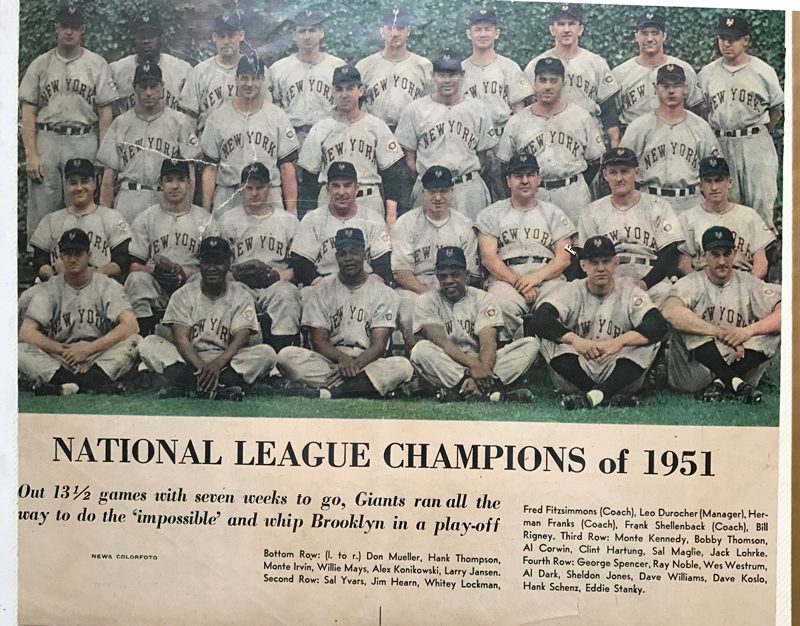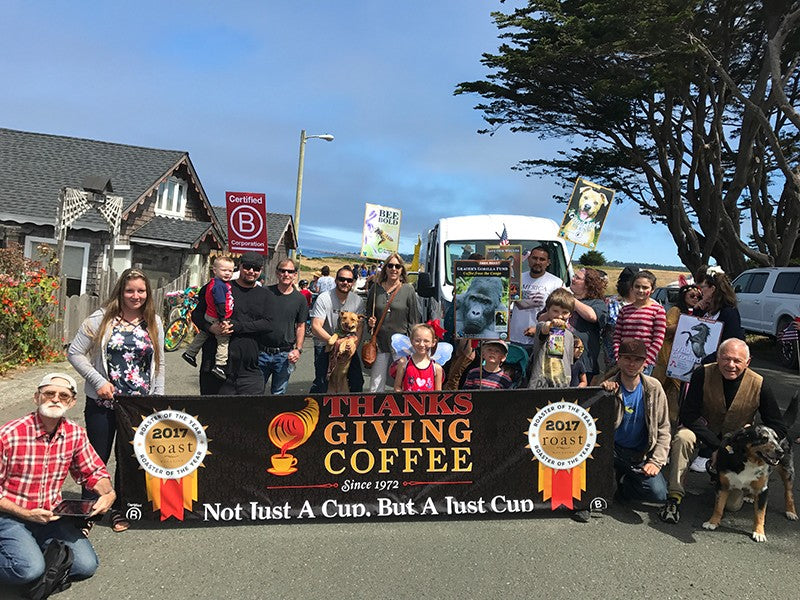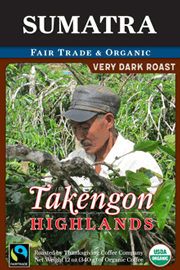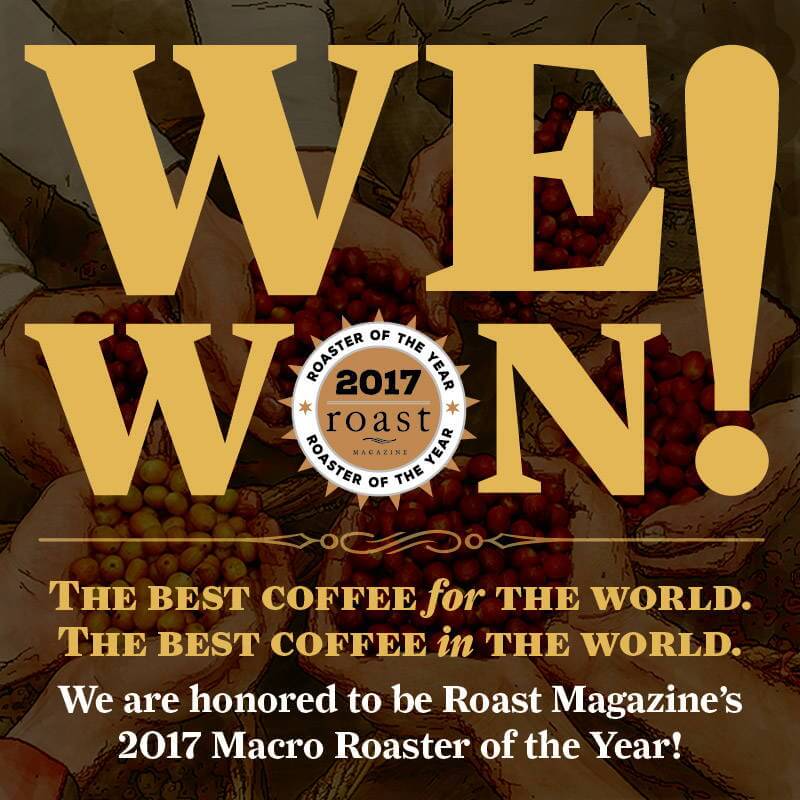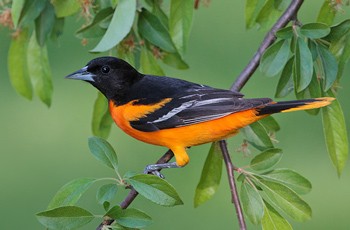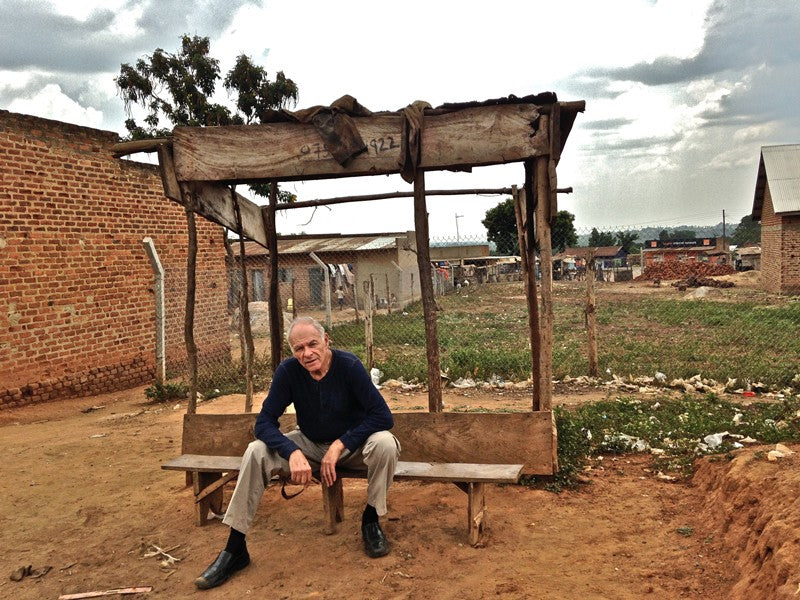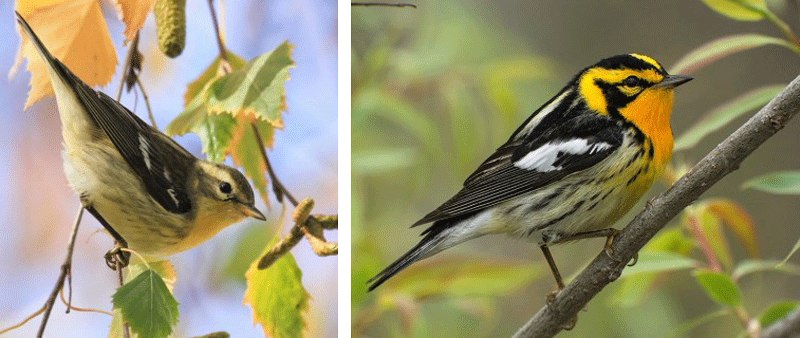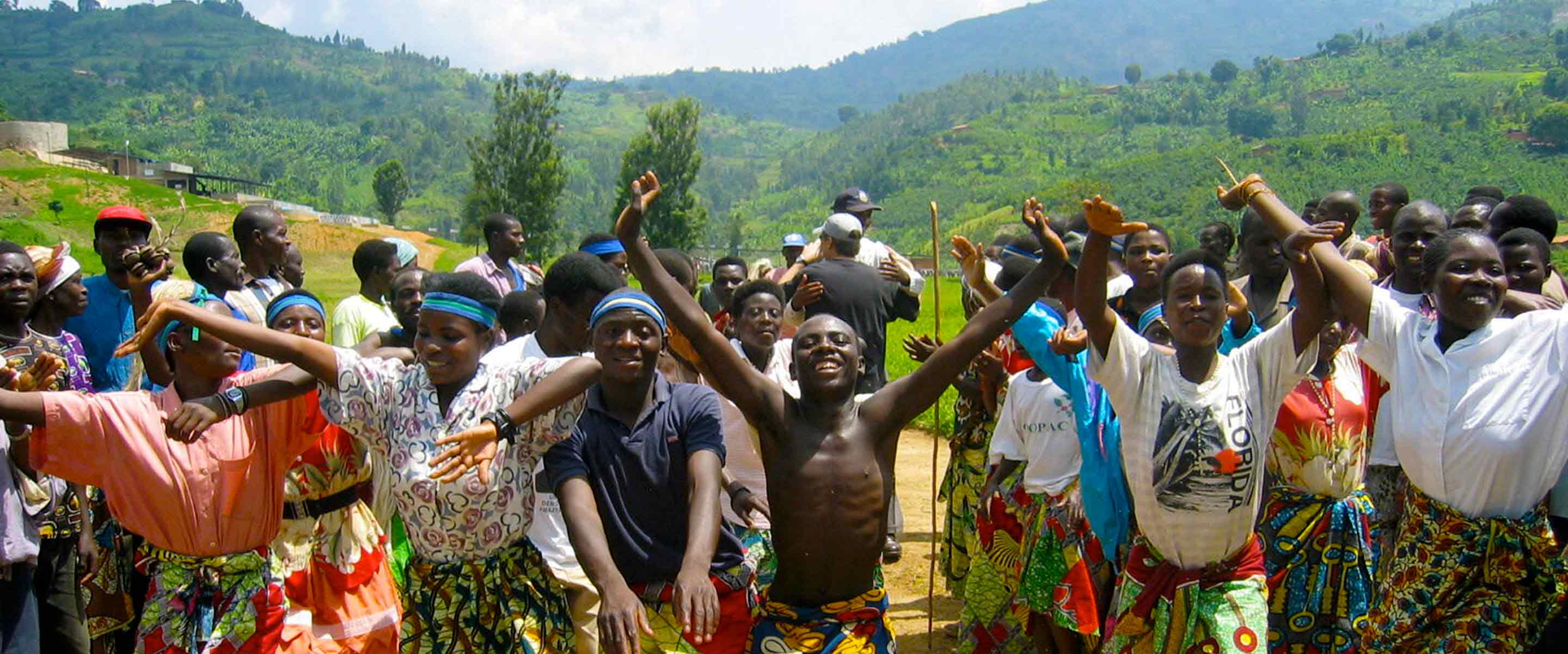
News, Stories and more
Our Blog
View BY :

Earning Beans For Coffee Rewards
Thanksgiving Coffee Company Appreciates You We have made it simple and effective for you to get the appreciation we think you deserve. It is the “Earn Beans” reward system. Yay! These rewards will be counted as “beans” which you can redeem as discounts. The more beans you earn the greater the discount, all the way up to free products!
read more-
![Only the Strong Survive: A Story from New York]()
Only the Strong Survive: A Story from New York
I was born in The Bronx. I played stick ball. I hung out at the corner candy store. I bought two pretzels for 3¢.
We read comic books, which cost a dime. Once they were read, we traded them for 2¢. You could take your old comics out on the street, set them up on a wooden box, and collect your money for pretzels or an egg cream (8¢). The 50’s were pretty good for a kid. You could go anywhere in the city for a nickle subway ride, and you never thought it was dangerous.
I could tell you a million stories about growing up in the Bronx, including the time I went back in 1975, five years after I had left for California. I discovered that “my” candy store had become a Korean market. The soda fountain, comic books and telephone booths were all gone. (telephone booths were for the local bookies to take their bets and call in their bets they wanted to “lay off.”
I bought a t-shirt that stated The Bronx: Only the Strong Survive.
By the time I was 13 in 1951, I was traveling to Harlem to see the NY Giants play baseball at the Polo Grounds. One night, I remember sneaking into the Polo Grounds to see the Giants play the Cubs. I don’t remember the game at all, but I do remember what happened after the game…
It was about 11:30pm. I was waiting in the parking lot with my program for the ball players to come out of the locker rooms. Autographs were my goal. A reward for successfully sneaking into the game. It was dark, it was Harlem, it was late at night. All the cars were gone. There were no overhead street lamps to light up the parking area. But it was safe… or was it?
Where were the players? I had waited. Paid my dues, but nothing was happening as I watched the last few cars abandon me to being totally alone on a three acre unlit parking lot at midnight in Harlem. Then, a door opened and out came four players. The encounter went something like this:
#1: Hey kid, what are you doing here in the dark?
Kid: Waiting to get autographs.
#2: Where you live kid?
Kid: Palham Parkway.
#3: How you getting home?
Kid: I will walk over that bridge (138th st) to the subway and take the train home.
#4: Get in the car, we’ll take you to the subway station.
I got in the car and have no recollection of anything else. Thirty-four years later, while showing my six-year-old son my baseball card collection (the one most mothers are reputed to throw away), out popped the Giants’ 1951 program. I had not looked at it for over thirty years. Much to my surprise, it had three autographs on the cover and one inside. Who were these players who saw fit to rescue a 13 year old white boy from the long dark walk to the subway?

Willie Mays, Monte Irvin, Hawk Thompson. All Hall of Famers. Inside was Don Mueller, the 1951 national league batting champion. They’re the first four guys from the left on the bottom row of the photo below.

There is a lot of the Bronx still left in me. I had my first cup of coffee in the Bronx. They said it was mountain grown and good to the last drop.
Today, 65 years later, I want you to taste a Bronx-influenced blend of coffee I proudly named for myself (THAT’S Bronx Moxie!) I am proud of this blend. It took a lot of personal coffee experience to understand, as I eventually did, how to get the flavor profile I wanted. It’s a Bronx kind of coffee! Intense, heavy, with blueberry/strawberry notes and a long finish. The coffees are from Ethiopia and Nicaragua. Two countries where only the strong survive.
Paul Katzeff, co-founder and CEO of Thanksgiving Coffee Company
Only the Strong Survive: A Story from New York
read more -
![Fourth of July Mendopendence Parade!]()
Fourth of July Mendopendence Parade!
We had so much fun participating in Mendocino County’s Fourth of July parade! Check out a couple shots of our piece of the parade, and a few photos of the day…




A great drone flyover video of the July Fourth parade in Mendocino, from California Poppy Films. What a crowd!
The photos below of our Thanksgiving Coffee families were captured by Sam Koski Jones – thanks for sharing!


Fourth of July Mendopendence Parade!
read more -
![Coffee 101 : Roast Colors - What do They Mean?]()
Roast Colors: What Do They Mean?
It’s time to get educated.
Whether or not you have a go-to coffee, you probably have an idea of what you like. Something with a smoky taste, so you can add a splash of milk; or perhaps something on the sweeter side for your cold brew. We want to help you dig in a little deeper and learn more about every one of the roast colors, and what you’re tasting in your cup of coffee!
For each roast color, we’re highlighting a coffee that is really standing out right now. These recommendations come straight from our Roastmaster and Roastmaster Emeritus on what coffee they’re drinking these days. However, we DO want to encourage you to go outside the box, and take a look through all the coffees and roast colors on our website–try a variety to find that perfect cup!

Light Roast Coffee
Nuanced • Bright • Lively
In the lighter roasts (both light and medium), you can taste the nuance and impact of terroir. If you’re a single origin lover, these coffees are your go-to. With a light roast especially, the specific qualities unique to the coffee’s origin stand out. If you’re sticking with Vienna and French roasts (the darker beans), you have to work harder to tell the differences between origins. With light, it’s all there in the first sip.
For those of you that cup your coffee and take the time to taste every flavor, the lights and mediums are probably the roasts for you. When purchasing a single origin coffee, the great ones are best at this roast color.
Light Roast Recommendation
 Our Nicaraguan Flor de Jinotega is really making an impact right now. We received a fresh crop as of the beginning of June, and it’s tasting nutty, chocolaty, smooth and sweet. A really pleasing cup!
Our Nicaraguan Flor de Jinotega is really making an impact right now. We received a fresh crop as of the beginning of June, and it’s tasting nutty, chocolaty, smooth and sweet. A really pleasing cup!
Medium Roast Coffee
Nutty • Spicy • Balanced • Fruity
Roasted about 20 degrees Fahrenheit higher than the light, the color on a medium roast coffee bean shifts into a chocolate brown. As you move from the light roast to the medium, the bright and lively acidity morphs into a smoother, deeper, and more balanced mouth feel. In every sip of a medium roast, you’ll find that a certain mellowness and maturity prevails.
Medium Roast Recommendation
 Thanksgiving Coffee has many medium roasts that stand out, but our Fairtrade and Organic Mocha Java is a classic that we love more and more every time we brew it. This coffee has that balanced and nuanced flavor we referenced above, and was described as having a “delicately sweet aroma” by CoffeeReview.com, where it scored 90 points.
Thanksgiving Coffee has many medium roasts that stand out, but our Fairtrade and Organic Mocha Java is a classic that we love more and more every time we brew it. This coffee has that balanced and nuanced flavor we referenced above, and was described as having a “delicately sweet aroma” by CoffeeReview.com, where it scored 90 points.
Dark Roast Coffee
Bold • Spicy • Chocolaty
The coffee bean color on our dark roast (sometimes called the Vienna roast) is still more brown than black. You could compare it to the color of baker’s chocolate. When this coffee is freshly roasted, the beans will have a shiny coat of coffee oils on their surface. The greatest dark roast coffees will have hints of carbonization, but shouldn’t be described as smoky or toasty — we’ll leave those descriptors to the very dark roast.
Dark Roast Recommendation
 The preferred dark roast of the Thanksgiving Coffee Roastery right now is our Congo Coffee. Just launched earlier this year, this single origin is changing the way we think of dark roasts. As you sip this coffee, you’ll notice rich notes of chocolate and spice, with a syrupy mouthfeel.
The preferred dark roast of the Thanksgiving Coffee Roastery right now is our Congo Coffee. Just launched earlier this year, this single origin is changing the way we think of dark roasts. As you sip this coffee, you’ll notice rich notes of chocolate and spice, with a syrupy mouthfeel.
(Bonus Points: every purchase of our Congo Coffee benefits the Dian Fossey Gorilla Fund International!)
Very Dark Roast Coffee
Toasty • Smoky • Caramelized Sugars
Ah, the “French Roast.” This is the coffee that goes great with a splash of milk. The coffee bean color on our very dark roast is more black than brown, with rich and copious levels of surface oil. Roasted long and hot to produce deep carbony, smoky flavor notes. A well-made French roast will have caramelized sugar notes, licorice and roasted chestnut flavors, and a long wet (not ashy) finish.
Very Dark Roast Recommendation
 We recommend the Sumatra as our very dark roast selection for a very good reason: you don’t find many single origin coffees that are roasted to this color. It takes some work to create a French roast that still has the flavors and nuances of origin, and this coffee does that well.
We recommend the Sumatra as our very dark roast selection for a very good reason: you don’t find many single origin coffees that are roasted to this color. It takes some work to create a French roast that still has the flavors and nuances of origin, and this coffee does that well.
As we sign off on our roast color education, we want to remind you of something: if you aren’t sure you’ll like it, give it a try! Are you regularly a French roast lover? Give medium a go. Religiously purchase the Bolivia Light Roast? Add the Rwanda Medium to your order this month for something new. The best way to develop your taste preferences is to get outside your box and liven up your selection.
Enjoy your roast color adventure!
Oh yes, you CAN blend different roast colors! Paul Katzeff created an app for all you iPhone users to explain this even more. It’s called Smart Coffee, and it was designed to help you blend roast colors, and create a flavor profile that is specific to YOU. Check it out!
Coffee 101 : Roast Colors - What do They Mean?
read more -
![Kona Cold Brew Marinade for Pot Roast]()
Kona Cold Brew Marinade for Pot Roast
From Lawrence Bullock
Here’s a cold brew marinade recipe for anytime when you have an extra bit of prep time. You will need a full two days for prep, and another ten hours for the slow cooker.

Cold Brew Recipe:
From a 12 oz package of Thanksgiving Coffee Kona Blend, use 1/4 cup of beans, ground coarse for French Press, in a 1 quart French Press in the refrigerator. Add the ground coffee, and a quart of filtered water, and replace the plunger and lid. Don't press the plunger down till the brew is done. Once the cold brewing was complete (12 hours) I press the plunger down, trapping the grounds. If you don’t have one of those, simply pour off the cold brew into a second container until you see the sludge. Set the strained cold brew aside. Discard any solids left at the bottom, and you’re left with a concentrate of cold brew coffee. Add water to get to the desired volume.The Pot Roast recipe:
I bought two chuck roasts. Chuck roasts are an inexpensive cut, but flavorful. I put the cold brew into a container that I knew could contain the roasts and the cold brew. A lidded container is preferable, but if you don’t have one, use cling wrap to seal it off. Use enough cold brew to completely cover the meat.
I then placed the meat, covered in cold brew, in the refrigerator for 24 hours. Once the cold brew marinade process was over, I poured the leftover cold brew coffee into a container and set it aside.
As you can see, planning ahead is essential as two 24 periods are involved, and THEN a ten hour cook time... But it’s worth it.
I then used the directions on a product called Johnny’s French Dip Au Jus. This product can be found in most grocery stores, or online, these days. You only need one little bottle, but I usually buy two and keep one in the pantry. Johnny’s French Dip Au Jus contains: Water, Hydrolyzed Vegetable Protein (Corn, Soy, Wheat), Red Wine Vinegar, Tomato Paste, Worcestershire Sauce. The basic recipe for the au jus, according to the label on the little bottle is two parts water to one part au jus. Instead of the recommended water, I used the cold brew that I had marinated the roasts in. Using those directions, I ended up with 3 cups of au jus liquid. It pretty much covered the roasts. You can make more of the au jus if you wish. Make enough to cover the roast (or roasts) completely.
Discard any leftover marinade. Any product that has touched raw meat should be discarded if not used in a timely fashion.
Cooking the Pot Roast
I set the slow cooker to ten hours and let it cook. For ten hours.
A coffee-saturated roast beef was the result. The coffee flavor was evident but not overwhelming and taste tests went well. A wide rage of ages (15 to 67) tasted the roast at completion and enjoyed it.
You can add carrots, potatoes and any number of vegetables associated with standard pot roast recipes, but I chose to not include them in this recipe because I wanted to taste what a strict coffee au jus and meat only combination tasted like. I’m sure adding the vegetables would be just fine, and I’ll probably do that next time!
Kona Cold Brew Marinade for Pot Roast
read more -
![Hot Coffee, Cold Coffee: How Does Temperature Affect Taste?]()
Hot Coffee, Cold Coffee: How Does Temperature Affect Taste?
From Lawrence Bullock
Biologists have only recently started understanding how and why temperature affects the taste of food and beverages. No research has been conducted specifically regarding coffee. But there are three main theories; the first holds that lukewarm coffee tastes bad because cavemen didn’t have refrigerators.
Karel Talavera of the Laboratory of Ion Channel Research in Cuba has studied the way that taste receptors inside our taste buds respond to molecules at different temperatures. He and his colleagues found that certain taste receptors are most sensitive to food molecules in the 20 to 35 degree Celsius (68 to 95 degree Fahrenheit) range — in other words, molecules at or just above room temperature. The taste receptors in question don’t always register molecules much hotter or colder than this range, so we don’t taste them.
“This is still an obscure phenomenon that we cannot explain, but that could fit to the fact that taste perception does decrease above a certain temperature,” Talavera says. In short, hot coffee (around 170 degrees F) may seem less bitter than room-temperature coffee (73 degree F) because our bitter taste receptors aren’t as sensitive to bitter molecules in the coffee when those molecules are hot.
According to Talavera, our sensory systems tend to be designed by evolution to perform most effectively at the temperatures we are typically exposed to. “Our ancestors did not eat food at extreme temperatures,” he said. Their meals consisted of mostly foraged berries and freshly hunted meat in the 20 to 37 degree Celsius range — almost exactly the window in which our taste buds are most sensitive. Because piping hot or ice-cold coffee falls outside this realm of maximum taste, our taste buds don’t sense the drink’s true bitterness.
However, the temperature-dependence effect observed by Talavera and colleagues is more pronounced for sweet taste receptors than bitter ones, and so it may not be the only factor at work. Some researchers think tepid coffee’s bitterness has more to do with smell than taste. “Odors influence coffee flavor very strongly, and it is easy to go from sublime to horrible,” Paul Breslin, an experimental psychologist who studies taste perception at Rutgers University, wrote in an email. Even very bitter coffee, such as espresso, tastes great when hot because of its pleasant aroma, he pointed out.
According to Barry Green, a taste perception scientist at Yale University, hot coffee releases more aromatic compounds than room-temperature coffee, so it has a greater chance of impacting taste. He also said that milk, coffee’s frequent companion, tastes worse at room temperature, and a combination of these factors probably explains the nearly universal opinion that lukewarm coffee leaves something to be desired.
One last theory holds that hot coffee’s heat could be distracting us from its strong flavor. As Breslin put it, “It is possible that an attentional mechanism is at work. You do not think about how bitter or sweet [coffee] is when it is hot or cold. Hot coffee may force you to think about temperature, which is a bit of a distraction from its bitterness.”
None of the researchers profess to fully understand coffee’s temperature-dependent deliciousness, but it seems to be at least slightly, only a matter of opinion.
Below: A photo featuring both hot coffee and cold coffee from one of our cafes, The Good Earth Coffee and Tea House in Oroville, California!

Hot Coffee, Cold Coffee: How Does Temperature Affect Taste?
read more -
![Take Your Dog to Work Day]()
Take Your Dog to Work Day
Friday, June 23 is Take Your Dog to Work Day! Then again, for a few of us here at Thanksgiving Coffee Company, everyday is take your dog to work day. Meet two of our office pups, Zoe and Brutus!


Zoe was adopted from the Border Collie Rescue of Northern California. These guys serve most of Northern California, re-homing animals that need new situations and families that will take care of them. Zoe’s mom is Patty, from our accounting team. Patty has been a part of the Thanksgiving Coffee family for 28 years, and Zoe for 8 of those years!

Brutus is a newer addition to our office. Co-founder and CEO Paul Katzeff adopted Brutus from the Mendocino Coast Humane Society just two months ago! He’s already adjusted nicely to life at our headquarters, although we found out he does not like to pose for photo shoots.

Thanksgiving Coffee Company has partnered with the Mendocino Coast Humane Society to create a Cause Coffee that benefits their shelter. This non-profit has been serving Fort Bragg and beyond for over thirty years. We are proud to be a part of their fundraising efforts, and stand with an organization that is doing good for the animals of our community! Learn more on the MCHS Cause Coffee page.
Take Your Dog to Work Day
read more -
![Boonville Coffee for Sierra Nevada!]()
National Trails Day at Pelican Bluffs
This weekend is the 24th annual Sierra Nevada World Music Festival, and it’s one of the Mendocino County events that is not to be missed. As you’re driving to and from the festival and need a coffee fix, here are a couple places to stop by and grab a cup of Thanksgiving Coffee!

BOONVILLE
Lizbby’s Restaurant and Bar
Anderson Valley Market
Redwood Drive In
PHILO
Stone and Embers
Lemon’s Market
The Bewildered Pig
NAVARRO
YORKVILLE
CLOVERDALE
Dahlia and Sage
Eagles Nest Deli
The Upsetter (Espresso)
Did you know that our Upsetter Espresso Blend is a reference to one of our favorite reggae artists? Lee “Scratch” Perry will be performing at Sierra Nevada this year. The label design on our Upsetter (a light roast espresso blend) is a reference to his label: Upsetter Records. Can’t wait to see him perform this weekend!

Have fun at Sierra Nevada… maybe we’ll see you out there!
Boonville Coffee for Sierra Nevada!
read more -
![For the Birds: Altamira Oriole]()
For the Birds: Altamira Oriole
For the Birds is a blog series from Thanksgiving Coffee Company, highlighting one of the 200 Neotropical migratory birds who rely on shade grown coffee during their winter migration. In January, we featured the Cedar Waxwing, in February, the Magnolia Warbler, March was the Blackburnian Warbler, and to celebrate the re-release of our Song Bird Decaf, we are featuring the Altamira Oriole!
Altamira Oriole

Song Bird Decaf Medium Roast Coffee
The striking orange and black plumage of the Altamira Oriole (icterus gularis) graces the label of our newly re-released Song Bird Coffee Decaf, and with good reason. This delicious Smithsonian Migratory Bird Certified coffee is decaffeinated with a clean, all-natural mountain water process in the Chiapas region of southern Mexico, home of the Altamira Oriole.

The Altamira is a large oriole and builder of the longest nest of any bird in North America. In the United States their range is limited to the Rio Grande Valley of southern most Texas, but their nests are a common sight throughout Mexico and Central America.

The female bird uses the inner bark of trees, retama leaves, various grasses, and occasionally Spanish moss and plastic twine to create one of nature’s architectural marvels. Over the course of several weeks, she painstakingly weaves a two-foot long basket that hangs over an open space, road, or river, suspending her fragile eggs thirty feet above the ground.

While many species of birds specialize in hiding their nests from the eyes of predators, the Altamira Oriole takes a different approach by building a home that is wildly conspicuous, but impossible to reach.
 All of Thanksgiving’s organically certified coffees are shade grown, and a select few carry the Bird Friendly gold seal of the Smithsonian Migratory Bird Center. This certification ensures that tropical “agroforests” are preserved and migratory birds can find a healthy haven to eat and rest as they travel the hundreds of miles from your backyard to the coffee farms producing the beans you so enjoy every morning.
All of Thanksgiving’s organically certified coffees are shade grown, and a select few carry the Bird Friendly gold seal of the Smithsonian Migratory Bird Center. This certification ensures that tropical “agroforests” are preserved and migratory birds can find a healthy haven to eat and rest as they travel the hundreds of miles from your backyard to the coffee farms producing the beans you so enjoy every morning.
You don’t need binoculars to find a coffee that protects forests, helps wildlife and supports the efforts of the American Birding Association; just look for the Songbird Coffee with the Altamira Oriole on the front.
For the Birds: Altamira Oriole
read more -
![Join the Fight to Save Our Wild Horses]()
Join the Fight to Save Our Wild Horses
Thanksgiving Coffee, an industry leader in social and environmental justice for over forty years, stands in defense of our wild horses. The vanguard of fair trade shade-grown coffee, Thanksgiving has helped their nonprofit partners raise much-needed funds to champion their missions through the Cause Coffee fundraising program. And now, Thanksgiving is proud to support the efforts of the American Wild Horse Campaign (AMWC) with the release of Wild Grounds Coffee.

Save Wild Horses
Today, both livestock and wild horses have the right to roam the range, but the political power of the cattle ranchers is stronger then the political power of wild horses. In the forty years since a bill was passed by congress to protect the wild horses, moneyed interests have worked tirelessly to chip away at it. Now, the use of our publicly owned grazing lands is being prioritized to create market value for ranging cattle, which only provides for 3% of America’s beef consumption.
Unable to cull the herds or sell them for slaughter, the BLM began to round up what they considered to be an excess population. Today 35,000 horses, more than their entire population in the 1970’s, are kept in government holding pens. Not to be killed, yet never again to be free; this is a terrible fate to befall the national symbol of perseverance and freedom.
“The whole thing is cruel and lacks any sense of the American Spirit”, says Paul Katzeff, CEO of Thanksgiving Coffee and Past President of The Specialty Coffee Association of America, “We just gotta do something about the suffering to restore our own sense of freedom. Can you imagine the conditions? Thirty-five thousand wild horses in shadeless pens in 100 degree heat waiting to die?”

The American Wild Horse Campaign
The American Wild Horse Campaign is a champion for America’s wild horses and burros and they have been calling on Congress to reform the current ‘holding pen’ policies. Not only would such methods keep these animals in the wild, where they belong, it would also save taxpayers millions of dollars annually by no longer funding the removal of wild horses from the range and stockpiling them in government holding facilities and paying for their feed and water and medical needs.
Thanksgiving Coffee Company, 2017’s Roaster of the Year, is sending Wild Grounds coffee out into the country with the mission to raise funds and educate others about the plight of our wild horses. Together, we will stand in defense of the mustangs who have an inalienable right to roam the western landscape, just as we stand up against those who would profit from their incarceration and eradication.
 We invite you to join us. Stand up for America’s wild horses and the pioneer spirit we all share. Order a package of award winning Wild Grounds coffee and you are not just supporting the horses; you are also supporting fair trade for the farmers, organic shade-grown coffee that preserve rich jungles forests, and the ethical standards of a certified B corporation. Since 1972, we have been proud to bring you a beautiful cup of coffee that tastes just as good as it feels.
We invite you to join us. Stand up for America’s wild horses and the pioneer spirit we all share. Order a package of award winning Wild Grounds coffee and you are not just supporting the horses; you are also supporting fair trade for the farmers, organic shade-grown coffee that preserve rich jungles forests, and the ethical standards of a certified B corporation. Since 1972, we have been proud to bring you a beautiful cup of coffee that tastes just as good as it feels.
Not Just A Cup, But A Just Cup.
Join the Fight to Save Our Wild Horses
read more -
![Roastmaster’s Select: Colombian Coffee]()
Roastmaster’s Select: Colombian Coffee
We’ve sung the praises of our Roastmaster’s Select Club before. An all-new coffee every month, micro-lots that you won’t see anywhere else, small batch roasts, and limited editions that taste magnificent.
But if you aren’t ready to take the plunge and sign up for a blind monthly club subscription, we have another option. Every few months, we pick a favorite from the club, and feature it here on our website for non-members. We’ve featured coffees from Panama, Kenya, Ecuador, Nicaragua, and more in the past months.
What’s up next? Our Colombia Medium Roast from the Cafe Colsuaves co-op.

Coffee From Colombia
Thanksgiving Coffee has sourced coffee from Colombia for years, and it continues to be a favorite origin of ours. We found this lot of coffee while searching for unique Colombian coffee for our club members. Roastmaster Jacob Long sample roasted the green coffee, and blind tasted it alongside a variety of samples — finding this Colombian to be a real stand-out.
This coffee is sourced from the Popayan region of Cauca, on the western side of Colombia. We ended up purchasing 500 pounds of this micro lot, and we’re impressed with the way it turned out. It’s quite smooth and nuanced, with a great body and flavor. The Cafe Colsuaves group produces brilliant coffees by putting a strong focus on lot separation and processing control, creating some truly unique micro-lots.
Colombian Medium Roast
Jacob created a roast profile that brings out the natural flavors of this Colombian, and everyone here at the roastery is loving how it tastes. This Medium Roast is rich and smooth, with complex notes of milk chocolate and vibrant citrus undertones. At the Thanksgiving Coffee tasting room, we especially love it in the Soft Brew, and we’re planning on trying it in our Cold Brew Kit later this month.
Give the Cafe Colsuaves Colombian Medium Roast a try. Add this coffee onto your next order, and we’re certain you won’t be disappointed. Don’t wait too long to get this coffee delivered! In just a few weeks, we’ll be rotating it out for a new Roastmaster’s selection!
Roastmaster’s Select: Colombian Coffee
read more -
![Coffee from Rwanda]()
Coffee from Rwanda
I was trailing off to sleep, it was a cool summer night in Mendocino. Joan’s voice came into my consciousness and broke my reverie. She was not yet ready to say good night to the day.
“Paul, I was listening to NPR today and there was this story about the poverty and the general plight on the African Continent. I think we need to begin focusing on buying coffee and supporting cooperatives in Africa like we do in Central and South America.”

Of course I agreed, and dozed off to spend some unconscious time thinking about the idea and all the effort it would take to be as bold an activist in Africa as we were then (and now) in Central America. I hoped that when I awoke in the morning my mind would have used the eight or so hours sleeping to clarify. I had no intention of just jumping into more work.
What Joan was asking was not simple but as President of Thanksgiving Coffee she did have a big voice in things such as this. We would have to pick the countries we wanted to work in, we would need to take sixteen hour flights, we would have to find communities we could work with, we would need to buy coffee in container loads to be effective. A container load is 37,500 pounds. We would have to build a demand for these new coffees or we were going to have to buy less of other coffees, which hurts the farmers we are already working with.
That morning at work, an amazing thing happened.
I received a phone call from a professor at Michigan State University. She had recently received a USAID grant to help the Rwandan Coffee industry create a market plan for their reentry into the Specialty Coffee market, specifically aiming at the United States craft coffee trade. Yes, the entire country’s coffee industry!
How serendipitous is that? One moment we are lying in bed thinking, and the next day the answer and the challenge arrives on the phone.

They asked Thanksgiving Coffee to be part of a small group of coffee experts. We would fly to Rwanda in three weeks to help a country only ten years from its genocide in 1994. A genocide that saw 900,000 Rwandans murdered by their fellow countrymen, and their entire coffee infrastructure destroyed in the process. I wanted us to be there to help, but I said to Joan after the phone conversation: “Joan, you started this last night, and your answer and opportunity came this morning so I think it is YOU who will have to fly to Rwanda in three weeks.”
And that was the beginning of our now fourteen year odyssey with the Rwandan coffee farmers.
Trips to Rwanda

On that first trip to Rwanda, I remained in Mendocino. It was a first for us; me staying home and Joan going to do the exploring and experience the adventure.
On her first day in Rwanda, she met with the Dian Fossey Gorilla Fund International Executive Director, who was interested in linking the Rwandan coffee industry with saving the last 400 Mountain Gorillas, something Dian Fossey was murdered for trying to do. Joan saw the opportunity, and said that Thanksgiving Coffee would create a marketing plan for linking Rwandan coffee to Mountain Gorillas. That is how – on DAY ONE of Joan’s first trip to Africa – Gorilla Fund Coffee was born.
When things are supposed to happen, they do.
But usually, not so fast.

Joan went to tour the gorilla habitat, trekking for hours into the Virunga National Forest and was gifted by coming upon a family of Mountain Gorillas, led by a 500 pound Silverback. In her words:
“The rain is soft, the trail slippery and muddy. We’re moving quickly, breathing hard in the thin high-altitude air. Intent young trackers radio one another, ‘We are close.’ Suddenly the Amahoro Gorilla family crosses our path. Wow! What a sight. Two young gorillas grasp the pant legs of a couple in our group before bounding off to join the adults – which included a 500 pound Silverback. I am transfixed and transformed in the presence of these gentle giants. I still can not believe I was there and it really happened.”
My own experience with the gorillas in Rwanda came a year later. I got a chance to hang out with a different family of gorillas. I sat cross-legged, facing the Silverback leader for 45 minutes exchanging grunts every so often but never allowing our eyes to meet. He had a very intriguing aroma about him. Musty, earthy, very Sumatra coffee-like. It was clean and powerful. I would recognize it anywhere. And yes, I did read the novel Ishmael about the Silverback Guru teaching a journalist about life’s questions. I sat with my Silverback thinking he might just know a lot more than me about the meaning of life. He had big Brown eyes.
I took his portrait picture and it adorned our Gorilla Fund Package until 2016 when it was removed in favor of a younger gorilla image.

Building in Rwanda
On my second trip in 2005, I met with the Director of the USAID project and we mapped out a quality improvement plan to make Rwanda coffee the best it could be. We wrote a proposal which was funded the following year. It was a plan to put a tasting laboratory at every coffee cooperative so the farmers could separate their coffees and evaluate each lot individually.
This was a great advance at the time, and it put Rwanda in the running to be one of the most advanced coffee regions in all of Africa. This project gave me the opportunity to travel the countryside and visit many growing regions and finally find the Dukunde Kawa Coffee Cooperative in Mussasa. It is the coffee we have purchased for the past 12 years and has won the reputation of being the best of Rwandan coffee for the past five years in the Cup of Excellence competitions held yearly. We use that coffee to help save the gorillas.
Gorilla Fund Coffee has raised over $100,000 for DFGFI, since we began this program in 2005. Joan and I have attended many DFGFI celebrity fundraisers given in big city venues as honored guests for Thanksgiving Coffee’s work educating coffee lovers about the Mountain Gorillas. At one event I met and had a conversation with Gloria Steinem, at another I spoke with Sigourney Weaver who played Dian Fossey in the movie Gorillas in the Mist.
Now we are partnering with DFGFI to inform the American Coffee drinkers about the plight of the Grauer’s Gorilla who is Critically Endangered in the Democratic Republic of Congo. In my youth, this area was known as “deepest, darkest Africa.” Using the same idea, we went after finding a good coffee from the Congo to represent the Grauer Gorilla, that we would create a dark roast from.

Congo coffee is new to the pantheon of craft coffees. It is a country rife with political instability and crazed rebels who wreak havoc on villages. In 2013, I turned down an invitation to visit the Congo by my long time friend Richard Hyde of Cafe Direct who was working with a group of coffee cooperatives there. He knew I could be a buyer, but I had enough coffee and the Grauer’s Gorillas that make their home in the Congo had not yet come upon the DFGFI’s radar.
Three years later, the DFGFI began to work in the Congo, and I called my friend Richard to find out where I could get the coffee that comes from the mountains where the Grauer’s Gorillas reside.

In the beginning of this journey, we realized that it was the gorillas that could help the Rwandan people. Not many Americans will go out of their way to help the Rwandan people but all Americans want to support the Mountain Gorillas. So we focused on the gorillas to build the value and demand by consumers for this coffee.
We used the Fairtrade model and certification to give money back to the Dukunde Kawo Coffee Cooperative. We created a climate change mitigation program and financed shade tree planting. We even funded a milk cow project to supply each family with whole milk and cheese for family use and for added income. Every sale of the Gorilla Fund coffee benefited not only the gorillas, but also the members of this Rwandan Coffee Cooperative called “Dukunde Kawa”, which means “Great Coffee”. We intend to follow that same model to inform the public of the Endangered Grauer’s Gorilla, and support industry in the Congo.

It isn’t easy to do this kind of work in coffee. Lot’s of collaboration needs to be built into the process. There is always the risk that too much coffee will be purchased and sales will not match up. But we do this work for other reasons. Coffee is the medium, but it is not the message. This is how we work now with the American Birding Association, to save Migratory Song Birds, with Friends of the Earth to save Pollinators, with Defenders of wildlife to save our Wolves and soon, with more partners to save our wild animals.
So join us in our efforts and purchase these coffees and together we will make a difference.
Paul Katzeff, co-founder and CEO
Coffee from Rwanda
read more -
![Roaster of the Year: Thanksgiving Coffee Company]()
ONCE IN A LIFE TIME AWARD
We are beyond excited to announce that we have been chosen as the 2017 Macro Roaster of the Year! This prestigious award is chosen through a vigorous process by Roast Magazine, and we are so honored to have been selected.
Pictured Below: The Thanksgiving Coffee team outside our Fort Bragg headquarters
Roaster of the Year Selection Process
The selection process at Roast Magazine is truly impressive. In order to apply, the team at Thanksgiving Coffee compiled a 30 page booklet, outlining some of the most fascinating aspects of our company:
- Our humble beginnings in 1972, along the Mendocino Coast.
- The history of the causes we’ve supported over the past 40+ years.
- Farms and co-ops that we’ve worked with for decades.
- Our certifications we have acquired over the years.
Pictured Below: CEO Paul Katzeff at the original headquarters in Noyo Harbor
Choosing the Coffee: Blind Tasting
Being Roaster of the Year is not just about what we've done or where we came from… it’s about the coffee. After choosing the finalists from the information submitted to them from coffee roasters around the globe, Roast Magazine does a blind taste test. More from Unpacking Coffee Video
Pictured Below: Roastmaster Jacob Long in the Roastery
For this test, they asked each finalist to submit three roasts, and our roastmaster Jacob Long made the decision:
“This is an international competition, we were competing against the best artisan roasters from around the world. With so many great coffees to select from, I chose to present the judges with a few of our freshest coffees with amazing flavor profiles, vibrant and rich Kenyan Peaberry, floral Ethiopian Gedeb, and the beloved fruity-chocolatey Paul’s Blend.”
These coffees were sent to two separate cupping labs for the blind tasting. The judges at these labs scored all of the coffees presented by the finalists, and then combined those with the scores from the written submissions. The top rated coffee company is then selected as Roaster of the Year.
Each of these award-winning roasts is available through our Thanksgiving Coffee online store!
2017 Macro Roaster of the Year
The Roaster of the Year announcement was made at the Let’s Talk Coffee conference in Puerto Vallarta, where our Vice President Jonah Katzeff accepted the honor. During this event, Jonah also had the opportunity to meet with the great people of Sustainable Harvest, the Specialty Coffee Association of America and so many more movers and shakers in the coffee industry.
Pictured Below: Vice President Jonah Katzeff accepting the award at Let’s Talk Coffee
We want to say THANK YOU to our fans, our friends and family, and everyone who has supported us over the 44 years of coffee roasting. This is such a huge honor, and we can’t wait to share even more of our coffees with the world over the next year!
Roaster of the Year: Thanksgiving Coffee Company
read more -
![Flight Beyond Borders]()
A celebration of International Migratory Bird Day

Here in the United States, we sometimes claim a cultural ownership of beautiful birds like the Baltimore Oriole, perhaps forgetting that the very same species could just as easily be named the ‘Panama Oriole’, or the ‘Nicaraguan Oriole’, as it spends half it’s life in Central and South America. IMBD is a reminder that the health and abundance of these birds that are so much a part of our heritage does not stop at our own backyard feeders. If we wish to enjoy their beauty and their songs for generations to come, we must care for them and their well being across all borders.
The growing demand for coffee, and the rise of the mono-cultured full sun coffee plantations, has demolished much of the wintering habitat for iconic birds like Orioles. In fact, many of these species are now referred to as ‘Coffee Birds’ because the only forest home left to them are the shade-grown coffee farms that preserve the jungle canopy.
For over 20 year, Song Bird Coffee has been a leader in supporting the farmers who protect their native forests by growing delicious coffees under the jungle canopy, preserving priceless habitat and biodiversity. This year, on International Migratory Bird Day, we hope you will join us in protecting our precious songbirds, just by enjoying a great cup of shade-grown coffee.
Flight Beyond Borders
read more -
![Smithsonian Magazine Feature – June 2004]()
Smithsonian Magazine Feature – June 2004
We’ve been digging into the archives a little bit, and came across this article from June of 2004. As Earth Day rolls around, check out this article from Smithsonian Magazine featuring Thanksgiving Coffee Company and our work in Nicaragua.
Read the article on the Smithsonian Magazine website.
Smithsonian Magazine Feature – June 2004
read more -
![Cold Brew Coffee]()
Cold Brew Coffee
Summer heat brings a change to the way many of enjoy of coffee — when the thermometer goes up the coffee temp goes down. Here are three ways to enjoy cold coffee: cold brew, ice coffee, and cold Nitro coffee. This blog talks mostly about the sweet way to beat the heat: cold brew!
Versatile, Healthy, Easy
Studies have shown that cold brew is less acidic than coffee brewed hot. The roasted flavor is diminished from a coffee that is cold-brewed. Another upside of not having that acidic taste is that it’s healthier for both your stomach and your teeth.
And since cold brew coffee has never been subjected to heat, the chemistry of it doesn’t change. Hot coffee’s chemistry changes as it cools. Your day-old cold brew won’t taste stale, like a cup of day-old hot-brewed coffee certainly will.
The taste of coffee comes down to the chemistry of the brewing process. When you expose coffee grounds to hot water, they release oils. These oils are full of acidic compounds that won’t dissolve at lower temperatures. The bite of those compounds anesthetizes the tongue and prevents you from noticing the coffee’s flavor. The acidity can be nice in hot coffee, but you don't get that percieved acidity in cold brew.

Steep Organic Coffee and Tea in Hopland serves up Thanksgiving Coffee Cold Brew on a daily basis.
In addition to being a favorite summer drink, cold brew coffee has the distinct advantage of allowing you to taste more subtle notes in coffee than its hot-brewed counterpart. Some of the delicate tones in coffee can become masked in a hot drink.
Many people will assert their preference that cold brew coffee simply tastes better. Undertones of chocolate, fruit, and nuts dance on the tastebuds more obviously with cold-brewed coffee. Our own preferences for cold brew here at Thanksgiving Coffee are single origin coffees, like the Ethiopia Natural, but some of our customers have used our Grey Whale Blend, and even our high caffeine Pony Express in their cold brew explorations. To find your preferred taste, experimentation is important – and cold brew is forgiving enough to allow that. You may even find that your tastes are seasonal.
Below is a shot from Caffe Etc. in Los Angeles.

As we experiment with our coffee for cold brew ourselves, we’d love to hear what your favorite cold brew coffees are! Share with us using our contact page, or on social media.
Another good thing about cold brew: It’s versatile. If you like your coffee hot, just add boiling water to the cold brew concentrate. Voila! Fresh hot coffee without the acid bite. If you’ve perfected your cold brew mix, but don’t want to dilute your drink with ice, freeze the mixture and use coffee ice-cubes. This way the mixture won’t get weaker as it melts – perfect for a picnic or a day on the beach. But here’s something to remember, though:. Ice cubes often pick up taste from the other things in your freezer,so be careful you don’t introduce off-flavors.
For our final little tidbit: A lot of recipes may avoid using coffee as an ingredient because of its acidity, but cold brew coffee, with its lowered acid content can be great for baking or marinating. Also, you can consider using cold brew in cocktails. Experiment with everything! You may discover your perfect cold brew libation. And if you do, let us know about it.
☕ How to Cold Brew Coffee
Our team recommends making cold brew coffee with a ratio of 2 grams of coffee for every fluid ounce of water.
To make cold brew, steep coarsely ground coffee in cold water for up to 24 hours — then strain. The longer the coffee steeps, the more intense the flavor will be. The resulting brew will be a concentrate, so be aware that you may want to dilute it or possibly serve it over ice.
Here are some additional tips for making cold brew coffee:
- Use Filtered Water: For the cleanest cup of cold brew, use filtered water.
- Steep Time: Steeping for at least 12 hours will produce a good cold brew, but some say it's best to steep for 18–24 hours. Steeping for too short a time can result in a weak and astringent brew.
- Strain: After steeping, strain the coffee concentrate through a coffee filter, fine-mesh sieve, or cheesecloth-lined sieve.
- Dilute and Serve - You can dilute the concentrate with water, ice, milk, or creamer, and serve it over ice. Cold brew has 67% less acidity than hot brewed coffee, so you can also try mixing equal parts coffee concentrate and water in a tall glass.
Have a french press? It works well for cold brewing and filtering. Simply add coarsely ground coffee and cold water, and then wait to push the plunger down until your cold brew has fully steeped.
Cold brewing coffee is easy, it’s fun, and it basically becomes a necessity as we head into summer. And we’re here to answer any questions you might have about how it works.
More Cold Brew Recipes:
What's your favorite cold brew recipe? Send us your recipe and photo using our coffee and we may add it to the list! Send to stories@thankgivingcoffee.com or post on social and tag us. Cheers!
Sold outSold outSold outCold Brew Coffee
read more -
-
![Micro-Lot Coffee]()
Micro-Lot Coffee
The world is lush with coffee growing regions, and inside those regions are thousands of small-scale coffee farmers, growing coffee in hundreds of different micro-climates and soil types. This is where we find the “micro-lot.”
Together with dozens of varietals (air, shade, wind, sun, rain, soil type, etc.), the coffee flavor is created in all its possibilities.
We have been in the coffee game for over forty years, and know the territory well, from Papua New Guinea to Nicaragua.
We know the farmers and they know us. Together we find these small, exceptional “micro-lots” produced by individual farms in quantities of no more than 10-20 sacks (1500-3000 pounds).
We pay the farmer a premium, and everyone involved is happy that a rare and quality coffee did not get lost in the crowd of good and quality coffee.
When the coffee finally arrives at Thanksgiving Coffee Company, our Roastmaster Jacob Long roasts the coffee 3-5 pounds at a time, using his knowledge to bring out the magic from each bean.
So when you see Thanksgiving Coffee offering a micro-lot coffee, you can be certain that you’re purchasing one hell of a great coffee.
– Paul Katzeff

Micro-Lot Coffee
read more -
![Seismic Joint at the Exploratorium]()
Seismic Joint at the Exploratorium
San Francisco’s Exploratorium is one of the great gems of the bay area. The exhibits inside Pier 15 will keep you and your family enthralled for hours on end. But before walking through those doors, it’s always a good idea to get caffeinated.
And we have just the place.
Seismic Joint Cafe
In the same building as the Exploratorium is the Seismic Joint Cafe at Pier 15. This little coffee shop is the perfect pit stop before (or after, or during!) your visit to the Exploratorium. Grab a cup of the I Love Curiosity Blend, roasted by Thanksgiving Coffee! This coffee was grown in Nicaragua and Rwanda, and roasted along California’s North Coast.
The Exploratorium
The Exploratorium isn’t just a museum; it’s an ongoing exploration of science, art and human perception. Learn more about them in this quote from their website:
Located in San Francisco, California, the Exploratorium is a public learning laboratory exploring the world through science, art, and human perception. Our mission is to create inquiry-based experiences that transform learning worldwide. The vision is a world where people think for themselves and can confidently ask questions, question answers, and understand the world around them. We value lifelong learning and teaching, curiosity and inquiry, our community, iteration and evidence, integrity and authenticity, sustainability, and inclusion and respect.
The Exploratorium creates tools and experiences that help you to become an active explorer: hundreds of explore-for-yourself exhibits, a website with over 50,000 pages of content, film screenings, evening art and science events for adults, plus much more. We also create professional development programs for educators, and are at the forefront of changing the way science is taught. We share our exhibits and expertise with museums worldwide.
Enjoy your trip to the Exploratorium, and don’t miss out on a cup of Thanksgiving Coffee, right there on Pier 15!
Seismic Joint at the Exploratorium
read more -
![For the Birds: Blackburnian Warbler]()
For the Birds: Blackburnian Warbler
For the Birds is a blog series from Thanksgiving Coffee Company, highlighting one of the 200 Neotropical migratory birds who rely on shade grown coffee during their winter migration. In January, we featured the Cedar Waxwing, in February, the Magnolia Warbler, this month we’re focusing on the Blackburnian Warbler – the bird featured on our dark roast Songbird coffee.
Blackburnian Warbler
Songbird Coffee Dark Roast from Colombia
With their bright colors and trilling songs, it’s no surprise that a group or flock of vibrant warblers is often called a ‘bouquet’. However, one of the most striking members of the warbler family would rather not join the bunch.
Common along the eastern region of the United States during their migration, the Blackburnian warbler can be easily identified as the only orange-throated warbler in North America. Named after botanist Anna Blackburn, the Blackburnian warbler is territorial on its breeding grounds, solitary in the winter, and only forms flocks during migration. In fact, this little bird is such a loner that even though both parents feed and care for the chicks, the parents separate when the young are old enough to fledge and leave the nest, each taking part of the brood with them.
But even the most solitary parent needs the support of a group every once in a while. After going their separate ways, the parents will sometimes join foraging flocks of kinglets and nuthatches with their begging young, the cries of which have been known to also attract chickadees.
 <
<
Of the over 50 species of New World warblers to be found in North America, perhaps it is the colorful Blackburnian that stands out as a lone bloom, refusing to join the colorful assemblage of other warblers.
Help protect the winter habitat of Blackburnian warblers by buying SMBC Song Bird Colombian dark roast shade-grown coffee.
Dark Roast Colombian Coffee
Toasted • Spicy • Dark Chocolate
A rich coffee with flavors of toasted nut and dark chocolate followed by a smooth lasting finish, making this a clear winner for dark roast coffee enthusiasts.
For the Birds: Blackburnian Warbler
read more -
![Raising a Mug to Support the Art Explorers]()
Raising a Mug to Support the Art Explorers

Frank Van Curen, Art Explorer and Paul Katzeff, CEO of Thanksgiving Coffee
“I love doing art because until recently I had never done it before. It makes me feel really good. It makes me happy because I love learning new things.”
“Doing art calms me down. I feel happy while I’m planning a design and working on my pictures.”
“Art makes me feel calm…art makes life better.”
“When I do my art I feel calm and like I’m experiencing what I think in my mind and throwing it onto the paper. The colors came from my brain and from nature. God gave me my talent and a giant heart that can love and do art and do other things.”
“Art is both relaxing and exciting. It makes me feel good about myself.”
“I like to spend a long time working on my portraits, often for weeks, even months. Sometimes I wake up in the night and plan what I’m going to do when I get to Art Explorers.” Frank Van Curen
“Art makes me feel calm…art makes life better.”
If you haven’t taken the time to stop by and meet the artists at the Art Explorers Studio and Gallery, then you are missing out on one of the great hidden treasures of downtown Fort Bragg.
Art Explorers has been supporting artists with mental disabilities since 1996, providing a safe space for them to express themselves and find peace of mind with the stoke of a paint brush.
Last weekend, the Art Explorers celebrated a new ceramics show in Town Hall in collaboration with their artist in residence, Sabine Brunner of the Little Cup ceramics studio. A departure from their usual work, the artists got to enjoy expressing themselves in ceramics with hand made sculptures and painted mugs. And what goes perfectly with a new, one of a kind hand painted mug? Why, a fresh cup of coffee of course! Which is why the event also debuted a new fundraiser for the Art Explorers program: Thanksgiving Coffee.
Showcasing the artwork of 5 current Art Explorers, each bag label shares the story of the artist who created it. As the program grows, the work of more artists will have the opportunity to grace the front labels, highlighting the incredible talent of our local artists.
Packages of Art Explorers Coffee, dark roast and decaf, are currently available for purchase at the studio, online, or at special events. Each bag sold supports the artists and staff members of the Art Explorers program, and with 5 different labels to choose from, you’ll want to collect them all!
So take the time to stop on by the studio at 305 E. Redwood Ave (Tues. Thurs. + Fri. 9:00am – 3:00pm, Saturday 12:00pm – 3:00pm) and meet the artists, maybe buy a painting or some greeting cards, and pick up a bag of truly beautiful and one of a kind Art Explorers Coffee.
Learn more: www.artexplorers.org
Raising a Mug to Support the Art Explorers
read more -
![MacCallum House]()
MacCallum House
The MacCallum House is a cornerstone of the village of Mendocino. This gorgeous Victorian home once housed the most prominent family of the Mendocino Coast, and now houses the #1 rated hotel in the village of Mendocino, according to Tripadvisor!
 <
<
This stunning building sits tall on Albion Street, looking over the houses and water towers, with views of the bay below. The house is surrounded by one of the most stunning gardens in the village, begun by Daisy MacCallum herself in the late 1800s. Daisy was an early member of the American Rose Society, and her passion for gardening is still evident on the MacCallum House grounds today. The restaurant often serves produce grown in their own Chef’s Garden.
 <
<
The MacCallum House is a landmark of Mendocino, and the favorite hotel for many of the tourists that visit our area. The Mendocino Coast would not exist as it does today had it not been for Daisy MacCallum’s family, and their prominence in the community made this area what it is today!
These days, the property has a restaurant, bar, hotel, a community hot tub, a greenhouse, and two floors of suites above the first floor cafe. We are delighted to be working with such an amazing partner, to participate in the history that this property offers.
Thanksgiving Coffee and the MacCallum House
The MacCallum House was originally completed in 1882, and became a bed and breakfast almost a century later in 1974. Thanksgiving Coffee became one of their first vendors in 1975 – providing coffee for the guests of the inn, and later the restaurant itself.
 <
<
We created a special blend for guests of the MacCallum House, and now sell this unique coffee on our own website:
The MacCallum House Blend is full-bodied with dark chocolate overtones and a finish of sweet spices. This coffee is grown in the mountains of northern Nicaragua, surrounded by mango, guava trees, and avocados.
The gorgeous Victorian-style craftsmanship of the MacCallum House graces the label of this organic blend, so every time you reach for your bag of coffee in the morning, you’ll be reminded of the stunning Mendocino Coast.
During the month of March, our MacCallum House Blend is 20% off as our Monthly Special! Usually $14.50, you can purchase a 12oz bag for only $11.60 until April.
“In 1971 when I first arrived on the Mendocino Coast, Daisy MacCallum had just been moved to a nursing home. I would sneak into the MacCallum House and climb to the attic to read 100 year old books and journals – and imagine myself living back in the early days of Mendocino.”
Paul Katzeff, Co-Founder and CEO
MacCallum House
read more -
![Albion River Inn]()
Albion River Inn
Along the Mendocino Coast, we are lucky to have some of the most picturesque views in the world. From the stunning sunsets at Point Cabrillo Lighthouse, to the trails and forests in the Mendocino Woodlands: our coastline is a sight to behold.
In addition to our stunning views, we are lucky enough to have some truly magnificent restaurants and hotels – and one in particular has been a mainstay of the Mendocino Coast.
 <
<
Albion River Inn has been operating for over 35 years, and even before that was a successful restaurant. Located on some of the most beautiful property in Albion, any family who gets the chance to view a sunset from the grounds will never forget it. Sometimes it rains, but we promise – it’s still stunning.
This facility has been featured in countless publications, including Sunset Magazine and Wine Spectator. With only 22 rooms, the Albion River Inn is often difficult to book – but always worth the wait.
 <
<
Albion River Inn Restaurant
The restaurant on the Albion River Inn property uses ingredients grown and caught locally, and specializes in some of the best seafood you’ll find along the North Coast. A fun tidbit about the restaurant building: it was built out of wood salvaged from the Girlie Mahoney shipwreck, from 1919! This restaurant has won Wine Spectator’s Award of Excellence on nineteen different occasions, thanks to the great Chef Stephen Smith, and sommelier Mark Bowery.
 <
<
Thanksgiving Coffee and the Albion River Inn
The Albion River Inn Restaurant serves Thanksgiving Coffee, and has done so for the entirety of its existence. We worked with the restaurant and inn to create an organic blend unique to their brand. The Albion River Inn Blend is consistently a top-seller on our website, and those who enjoy it at the Inn are consistently impressed with the flavors presented in the dark roast.
A full-bodied and well-rounded blend with sweet chocolate tones and a crisp, toasty flavor, our Organic blend is grown high in the mountains of northern Nicaragua. Its rich complex flavor is a delightful reminder of the Albion River Inn and California’s magnificent North Coast.
 <
<
This unique coffee is 20% off during the month of March, and is a coffee you’ll likely order again and again. This coffee is one of our bestsellers, and has never been on sale before now! Snag a bag or two online for your next morning cup of coffee, and be sure to stop by for a meal next time you’re near the Albion River Inn.
“Before it became the Albion River Inn, it was a rickety old dance hall that the hippies commandeered back in the day to dance to psychedelic music. The floor shook and being so close to the edge of the cliff, overlooking the shore 60ft below – I thought it might just fall into the ocean. That was back in the early 70’s.”
– Paul Katzeff, Co-Founder and CEO
Albion River Inn
read more -
![Congo Coffee for the Dian Fossey Gorilla Fund International]()
The Incredible Story of a War-Torn Region Redeemed by the Coffee Bean
 <
<
The Democratic Republic of Congo is in the heart of central Africa and considered to be the most bio-diverse country in the entire continent, which is quite a distinction. Iconic African wildlife such as jungle elephants and white rhino roam throughout the four national parks, and it is one of the few places on Earth that many great ape species, such as gorilla, chimpanzee and bonobo, call home. Its lush forests and equatorial climate means that the DRC is also an excellent region for growing some of the best sweet Bourbon varietals of coffee trees in the world.
 <
<
But despite the country’s wealth of natural resources, decades of war, genocide, and political unrest has condemned many of the 68 million civilians to lives of poverty, disease and violence.
The lack of businesses and income-generating activity pushed the DRC into deeper turmoil and left the once productive coffee sector neglected or abandoned. Most of the coffee farmers could no longer bring their harvest to market and fled the region, while others resorted to smuggling their beans into Rwanda in hopes to barter for food and supplies. So near, and yet so far: smuggling coffee is very dangerous and many people have lost their lives in the attempt.
Due to these circumstances, the small amount of coffee still produced in DRC was coming from small farms with old or rudimentary equipment and no access to international markets. All of that changed when Joachim Munganga founded the now-famous SOPACDI co-op.
Congo Coffee Farm
SOPACDI (Solidarité Paysanne pour la Promotion des Actions Café et Développement Intégral) was created by Joachim Munganga in 2002, as a means to bridge the ethnic strife of the region in order to tap into the international specialty coffee market. The co-op is located on the shores of Lake Kivu, which straddles the border between the DRC on the west bank and Rwanda to the east. Joachim started with his own farm and worked to rehabilitate an old, rundown estate with a central washing station for the co-op to process coffee. It wasn’t until 2008, when SOPACDI joined forces with the UK’s Twin Trading Company, that the doors to the international coffee market were opened wide. Together, they designed and obtained funding for a program to assist them with business skills and to begin rehabilitating the farms and improving the infrastructure, which included spearheading the construction of the first new central coffee washing station to be built in the country in over 40 years.
Since then, SOPACDI has grown to include over 5,200 farmers, 20% of whom are women. In a region infamous for rampant sexual violence, SOPACDI has been a leader in promoting gender equality and supporting the widows of those farmers who died trying to smuggle their beans into Rwanda. In addition to the revitalizing their lost coffee economy, SOPACDI has earned the distinction of being the first certified fair-trade co-op in the DRC and was also named 2014 Sustainability Award Recipient from the Specialty Coffee Association of America. They even hosted the DRC’s first internationally recognized coffee cupping competition, Saveur du Kivu, in 2015.
Economic stability saves lives, and not just human ones. Poor economic conditions result in the rise of eating and selling bushmeat, further endangering the sensitive wildlife of the DRC. As the animals are hunted, their numbers drop and they retreat deeper into the dense jungle. As logging companies and farmers clear away the forests at an alarming rate, they provide poachers an even greater access to hunt. That is, of course, unless the forest and the animals who live there can become a better economic resource to the people of DRC as a sustainable living ecosystem. Such is the hope of shade-grown coffee.
Coffee trees love the shade and they naturally thrive under a jungle canopy. Many coffee farmers additionally supplement their resources by growing shade-loving food crops, such as banana and avocado, along side their coffee trees, all within the natural infrastructure of the forest. By weaving the livelihood of the farmers into the success of a thriving jungle ecosystem, we are simultaneously supporting sustainable commercial goods and conservation.
 <
<
Specialty Coffee Saves Gorillas
Grauer’s gorillas are the world’s largest ape and only found in the Democratic Republic of Congo. Over the last two decades their population has plummeted by an estimated 80 percent, which is why the Dian Fossey Gorilla Fund International has set up a program to help save them based on their success working with mountain gorilla populations in Rwanda. These efforts include daily protection and monitoring, tracking the gorilla groups, scientific research, data collection, local education programs, and community engagement.
 <
<
By employing the local Congolese people to protect the gorillas, the Dian Fossey Gorilla Fund International is helping to foster a love for these creatures within the community while also creating an economic benefit. They now operate a permanent research and conservation field station in the core of Grauer’s gorilla range, working closely with traditional landowners and other local partners to help ensure the future of the species and countless others at risk in DRC.
Thanksgiving Coffee is proud to support the economic renewal of the DRC by partnering with SOPACDI to bring you Grauer’s Gorilla Congo Coffee. Not only does the purchase of this coffee promote the livelihoods of the SOPACDI farmers, but a percentage of all online sales benefit the Dian Fossey Gorilla Fund International and their continuing efforts to conserve and study the great apes of the DRC.
Coffee changes the world, but it is quite possible that there is nowhere on Earth more profoundly impacted by the humble coffee bean than the Democratic Republic of Congo is right now. Together, we can all do our part to help stabilize this unique ecological treasure for future generations to enjoy by simply enjoying a good cup of coffee.
Congo Coffee for the Dian Fossey Gorilla Fund International
read more -
![Fair Trade: A Movement for All]()
Fair Trade: A Movement for All
The following is an excerpt from a post from our fair trade certification: Fairtrade International:
True fair trade is about mutually beneficial relationships rooted in trust and respect spanning geographic and cultural boundaries.
As a global movement, fair trade brings attention to people around the world who work under exploitative conditions and highlights the true costs of goods in global supply chains. Organizations and activists, businesses and brands, farmers, workers and artisans have diligently worked for more than 40 years to bring greater balance to the terms of trade.
In recent months, we have watched as the term ‘fair trade’ has been grossly misused by politicians to energize their supporters while vilifying others. We have seen the term used to exclude people and encourage an isolationist agenda. These ideas stand in direct opposition to the concepts of justice and inclusivity that underlie our movement.
For far too long, conventional trade has maintained a narrow focus on the lowest common denominator. Efficiency at all costs, lower prices, and little consideration for the full social, economic and environmental impacts have been hallmarks of conventional international trade. Massive consolidation of power in supply chains has resulted in fewer options for consumers, farmers and workers, and unprecedented wealth controlled by few. Oxfam’s recent report on global inequality revealed that just eight men control more wealth than the world’s 3.6 billion poorest people combined.
IF WE HOPE FOR A SOCIETY – IN THE U.S. AND AROUND THE WORLD – THAT IS MORE EQUAL AND JUST, WE MUST PRESS TRADE INTO THE SERVICE OF PEOPLE.
Global trade and the trade deals that accompany it are not inherently bad. They provide an opportunity to deliver the benefits of trade more broadly, but only if they are used for that purpose. Fair trade, with its focus on inclusion and empowerment, shows that trade can – and must – be more equitable.
If we hope for a society – in the U.S. and around the world – that is more equal and just, we must press trade into the service of people.
True fair trade creates shared value throughout supply chains.
True fair trade promotes openness and transparency.
True fair trade respects human rights.
True fair trade supports diversity.
We support trade that is truly equitable for all, including artisans, farmers and workers, traders and brands, consumers and civil society. Fair trade will never be about exclusion, but about expanding the benefits of trade for those who need it most.
As the U.S. considers renegotiating or entering into new international trade agreements, we encourage the inclusion of true fair trade principles. We urge all who care about human rights, shared value, transparency and diversity to call, write or meet with their elected officials and make your voice heard.
See the original article from Fairtrade International here, and check out the list of names that have signed on to this agreement!
Fair Trade: A Movement for All
read more -
![For the Birds: Magnolia Warbler]()
For the Birds: Magnolia Warbler
For the Birds is a blog series from Thanksgiving Coffee Company, highlighting one of the 200 Neotropical migratory birds who rely on shade grown coffee during their winter migration. In January, we featured the Cedar Waxwing; this month we’re focusing on the Magnolia Warbler – the bird featured on our medium roast Songbird coffee.
Magnolia Warbler

Songbird Coffee medium roast from Nicaragua
If you live east of the Mississippi river, you might be familiar with the Magnolia Warbler. This brightly-colored little songbird can be seen in the spring and fall as it passes through on its annual migration. Despite the name, these bird is rarely seen in magnolia trees. In 1810, ornithologist Alexander Wilson collected a specimen from a magnolia in Mississippi. At the time, he gave it the species the more accurate name of “Black-and-yellow Warbler”, but he used “magnolia” for the Latin name, and it stuck.

Like many warbler species, it can be hard to imagine how such a tiny bird, weighing little more than a quarter, can make a 3,000 mile journey, but they do it every year; from their summer breeding range in the Canadian Boral forests all the way down to Central America.
When the “Maggies” head south for the winter, they can often be found on shade grown coffee farms along with other migratory birds such as Ruby-throated Hummingbird and Western Tanager.

Although the population of Magnolia Warblers is thought to be stable, the birds are often victims of collisions with towers and other man-made structures, especially during migration. Habitat loss on their nesting and wintering grounds is also a threat. Supporting Bird Friendly coffee is an important way to keep Magnolia Warblers and other “coffee birds” common.


Medium Roast Nicaraguan Coffee
Nutty • Smooth • Milk Chocolate
Sweet without sugar, mellow without cream. This Smithsonian Bird Friendly Coffee is fruity, nutty and chocolaty with hints of dried mango. Sweet without sugar, mellow without cream, it is a great breakfast coffee. This coffee is roasted to a light milk chocolate color where its bright and complex flavors explode into life.
For the Birds: Magnolia Warbler
read more



